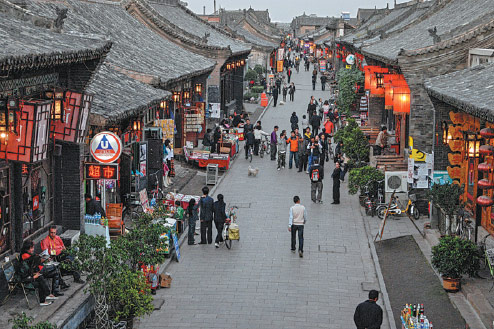

They are also able to see displays of local intangible cultural heritage, including paper-cut and shadow puppet play, as well as enjoying fashionable cafes and shops selling creative and trendy products.
In Sixian county, East China's Anhui province, vast verdant fields spread as far as the eye can see from the banks of a section of the ancient Grand Canal, interrupted only by a wooden pavilion and a stone bridge that spans the waterway.
It was one of the sections that was granted UNESCO World Heritage status in June 2014.
The Sixian section has survived the test of time, thanks to its natural geographical advantage and continuous protection by the population along its banks.
Yu Chao was born and bred on the banks of that original stretch of the canal and has witnessed significant changes in his neighborhood.
"My family used to live in the thatch- and tile-roofed dwellings among the farmlands along the canal," the 35-year-old says.
The area was plagued by litter, and pigs and fowl were left to run loose on the farmland, he recalls.
But, the canal somehow managed to avoid man-made pollution, and Yu says that, as a child, he would watch fish swimming in the water.
"Perhaps we, as locals, understood the importance of the waterway to our livelihoods," Yu says.
As soon as the site's historical value was realized in the 2000s, the wanton disregard for the surrounding environment stopped and the county's administrators have worked hard to improve it. Shanties have been relocated, and sewage systems have been put in place, says Wang Yongle, an official with the county's publicity department. Personnel have been assigned to regularly maintain the canal's environment.